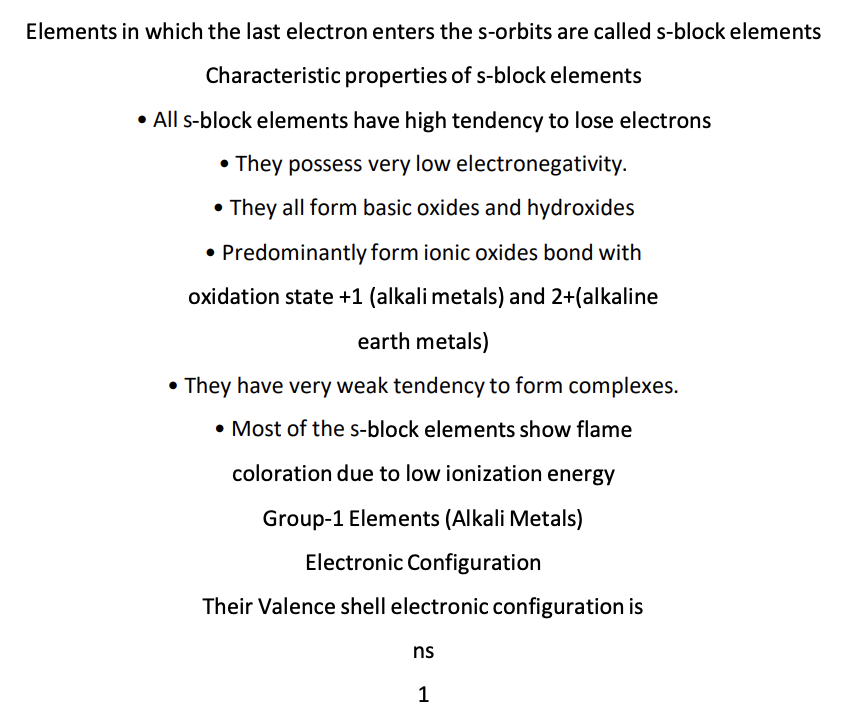Notes on Periodic Table Science
Summary:
S-block elements on the leftmost side of the periodic table are distinguished by the unique configuration of their outermost electrons, specifically entering the s-orbit. Because of their specific electronic structure, these elements exhibit a strong propensity to shed electrons, making them highly reactive. Along with their reactivity, these elements display a particularly low electronegativity, meaning they don’t tend to attract electrons in a bond as much as other elements. Another defining characteristic of the s-block elements is their ability to form basic oxides and hydroxides, emphasising their alkaline nature.
When diving deeper into their chemical characteristics, we observe that s-block elements, when forming ionic bonds, majorly adopt oxidation states of +1 (in the case of alkali metals like lithium, sodium) and +2 (for alkaline earth metals like calcium, magnesium). Complex formation, however, isn’t a strength of these elements, as they show a minimal tendency towards it.
One interesting and visually striking feature of many s-block elements, especially alkali metals, is their ability to produce vibrant flame colours, thanks to their low ionization energy. Focusing further on the alkali metals, Group-1 elements, have a consistent valence electronic configuration represented as ns^1. Physically, these elements are unique too. For instance, they possess considerable atomic and ionic sizes in their respective periods. The trend in densities is intriguing, with an increase observed from lithium (Li) to cesium (Cs), yet potassium, interestingly, is lighter than sodium, which is an anomaly in the trend. This divergence is attributed to an unexpected increase in potassium’s atomic size.
Excerpt:
Notes on Periodic Table Science
Elements in which the last electron enters the s-orbits are called s-block elements
Characteristic properties of s-block elements
• All s-block elements have a high tendency to lose electrons
• They possess very low electronegativity.
• They all form basic oxides and hydroxides
• Predominantly form ionic oxides bond with oxidation state +1 (alkali metals) and 2+(alkaline earth metals)
• They have a very weak tendency to form complexes.
• Most of the s-block elements show flame colouration due to low ionization energy
Group-1 Elements (Alkali Metals)
Electronic Configuration
Their Valence shell electronic configuration is ns 1


Reviews